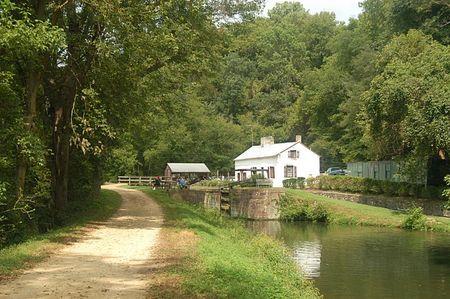The National Park System recently suffered tropical storm damage in an unexpected place. Kevin Brandt, superintendent of Chesapeake & Ohio Canal National Historical Park, explained that flooding produced by Tropical Storm Hanna last month created a 125-foot breach in the park’s historic towpath.
While parks in Florida and along the Gulf Coast are used to having to deal with damage from hurricanes and tropical storms, this damage occurred near the Old Angler’s Inn just a couple of miles north of the Washington Beltway.
The National Park Service suspects that pre-existing cracks had already weakened the towpath wall. This made the towpath vulnerable to the deluge of water dumped by the storm, and it was simply overwhelmed.
Initial estimates of repair costs are well in excess of $1 million. If those figures hold up, repairs will put a substantial dent in the park’s budget, which is currently just under $10 million per year. Not surprisingly, hurricane/tropical storm damage is not a regular part of the budget request for C&O Canal NHP. The NPS does have an emergency budget it can tap for things like storm damage.
As a down payment on this, the park’s cooperative association, the C&O Canal Trust, has just launched a campaign to raise $100,000 for storm damage repairs. This figure would be matched by the National Park Service. For further details and contribution information, visit the C&O Canal Trust's website.




Comments
Was Bigfoot seen recently at Chesapeake & Ohio Canal National Historical Park or did he just write the article? I was amused by the picture. :-)
Yes, a closely guarded secret can be revealed at last. Sabattis is Bigfoot. Remember that you read it here first.
Isn't this the kind of damage covered by insurance?
Anonymous -
An excellent question.
Unless something has changed since I retired from the NPS in 2001, here's the answer:
The federal government doesn't have insurance for such damage - repairs have to be covered out of existing agency funds, or in many cases, by funds appropriated via special legislation to cover repairs from storm damage, fires, earthquakes and similar incidents.
The theory is that the government saves money by being "self-insured" (in other words, uninsured), because the cost of paying for such repairs on a case by case basis is assumed to be less than the cost of premiums to insure the large number of government-owned facilities.